
www.braintumourresearch.org Tel: 01908 867200 | info@braintumourresearch.org The news magazine for brain tumour activists Issue 011 – Spring 2018 Caprice calls on you to support Wear A Hat Day £2 million granted to research & Brain Tumour Symposium –a great success + Scientists voice Brexit concerns at Westminster COVER STORY




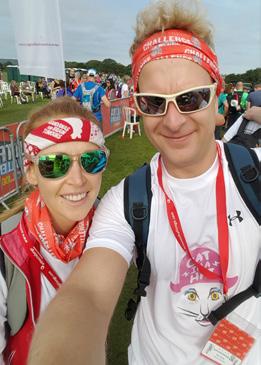
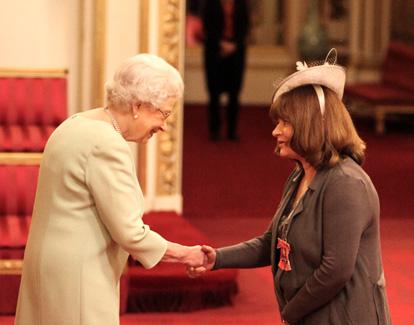
4 Chief Executive’s Foreword Progress in brain tumour research and optimism for the future
6 Couple take on challenge in memory of Cat Anderson
7 Loving daughter creates new Fundraising Group
8 Wear A Hat Day, celebrities and our new brooch
10 Teaming up with Hobbycraft for a hattastic partnership!
11 Get your thinking caps on!
12 Four-year-old’s first day at school raises huge awareness
14 Research updates
Blood-brain barrier
Third annual research workshop Centre publications help spread knowledge and facilitate progress Brain Tumour Symposium



26 Let’s Conquer it Together!
18 Send a Virtual Gift of Hope

19 Freemasons award six-figure sum
20 Raising awareness through Coronation Street
22 Employees stage charity cycle event
23 Sister leads Three Peaks Challenge team
24 Simplyhealth Great North Run
25 Phoebe’s family walk
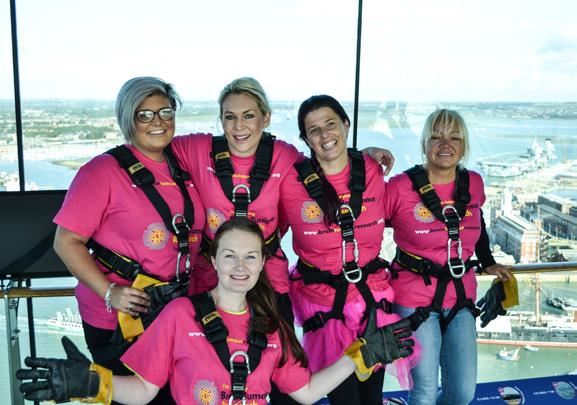
27 Keep in touch – subscribe to our e-news

28 Campaigning news Australian brain cancer mission launched Become a Community Activist and campaign with us Parliamentarians re-confirm their support Letter to The Times raises awareness and highlights concerns
32 braintrust’s my fatigue book
33 Red Wellies blown away by fundraising effort
Song For Sue dinner dance raises £14,500
34 Florist’s special tribute during Brain Tumour Awareness month
35 Forever In Our Hearts




Cover story 8 Caprice calls on you to support Wear A Hat Day COVER HIGHLIGHTS 4 £2 million granted to research 17 Brain Tumour Symposium –a great success Scientists voice Brexit concerns at Westminster
Majesty the Queen and Sue Farrington Smith image credit: Yui Mok/PA Images
Written and edited by: David Dean, Crispin Zeeman and Sue Farrington Smith at Brain Tumour Research, Suite 3, Shenley Pavilions, Chalkdell Drive, Shenley Wood, Milton Keynes MK5 6LB. Printed by: BCQ, 1 Osier Way, Swan Business Park, Buckingham, Buckinghamshire MK18 1TB www.bcqgroup.com Designed by: Clearthinking Creative, 51 Church Street, Hungerford, West Berkshire RG17 0JH www.clearthinkingcreative.co.uk
Her
Contents
www.braintumourresearch.org Spring 2018 3
Our Chief Executive reflects on brain tumour research progress and is optimistic for the future
It’s reading your stories and getting to know you at our events and through the letters and emails you send to us that inspire me, and the team, to continue to fight for the research funding we so desperately need.
Your stories are so important; they inspire both MPs to get behind our cause and the general public to support us and join our Fighting Force. We are proud to share your stories on our website www.braintumourresearch/inourhearts and www.braintumourresearch/inhope and with the media. Your stories are crucial in helping us raise awareness of this devastating disease.
What’s more, it’s your stories that have helped us grow the market for brain tumour fundraising and the investment in brain tumour research.
In 2002, as brain tumour charities started to emerge and the National Cancer Research Institution (NCRI) was formed, the outlook for brain tumour research and improved treatments was bleak.
The number of brain tumour charities has grown from 11 in 2002 raising £0.7m, to 87 in 2016 raising £19.5m, which they spend on research and/or support (in addition to the NCRI investment). We are proud that many of these charities support our research and campaigning, and many have become our member charities.
Move forward to 2016 and the same ratio of investment is going into breast cancer and leukaemia research. The investment in brain tumour research is growing but we need to increase it to the same level as these other cancers.
During 2017, we granted a total of £2m to our four UK Research Centres of Excellence, paving the way for at least a further £10m over the next five years.
Brain tumour charities’ income is catching up with the levels of fundraising for breast cancer and leukaemia charities, and this will lead to similar levels of national investment that those cancers receive over the next five to 10 years.
In the NCRI’s first reported year, at a national level, £22.5m and £17.7m were invested in breast cancer and leukaemia research (respectively). Just £1m (0.3%) was being invested in brain tumour research.
With continued focus, determination and your support we are making a difference. Real progress is being made and there is now more hope than ever before.
I was pleased to present this at the recent joint symposium with brainstrust (see page 17) and have been proud to represent you all at the Department of Health Task and Finish Working Group to improve outcomes for brain tumour research.
We should all be very proud of ourselves. Together we are making a difference. Together we will find a cure.
Sue Farrington Smith MBE Chief Executive
Cancer Charities Income Breast 107 £60m+ Leukaemia 107 £55m+ Brain Tumour 87 £19.3m Cancer 2003 % Avg % 2016 % Breast £22.5m 7.5% £37.8m 7.9% £40.8m 7.0% Leukaemia £17.7m 5.9% £27.6m 5.8% £35.0m 6.0% Brain Tumour £1.0m 0.3% £4.2m 0.9% £8.5m 1.5% 4 Spring 2017 www.braintumourresearch.org FOREWORD Year Brain Tumour Charities Income 2002 11 £0.7m 2009 40 £4.0m 2016 87 £19.3m

2017 started with an honour as I was privileged to be made an MBE in the New Year Honours List, and in the February I was humbled to attend my investiture presented by Her Majesty the Queen herself.
I shared with her my own story and how the loss of my sister’s little girl, Alison Phelan, inspired her parents and the rest of our family and friends to make a difference.
I also told the Queen how, with your support, we have gone on to establish four Centres of Excellence and have plans for a further three, and that Parliament is listening. She seemed impressed!
www.braintumourresearch.org Spring 2017 5
Image credit: Yui Mok/PA Images
COUPLE TAKE ON CHALLENGE IN MEMORY OF CAT ANDERSON
the inspiration for Cat in a Hat
Nathan, the brother of James Tilford, Cat Anderson’s partner, took on a 100km ultra challenge with his wife, Christina, to raise over £1,900 for research into the disease that took Cat just weeks before her 39th birthday.
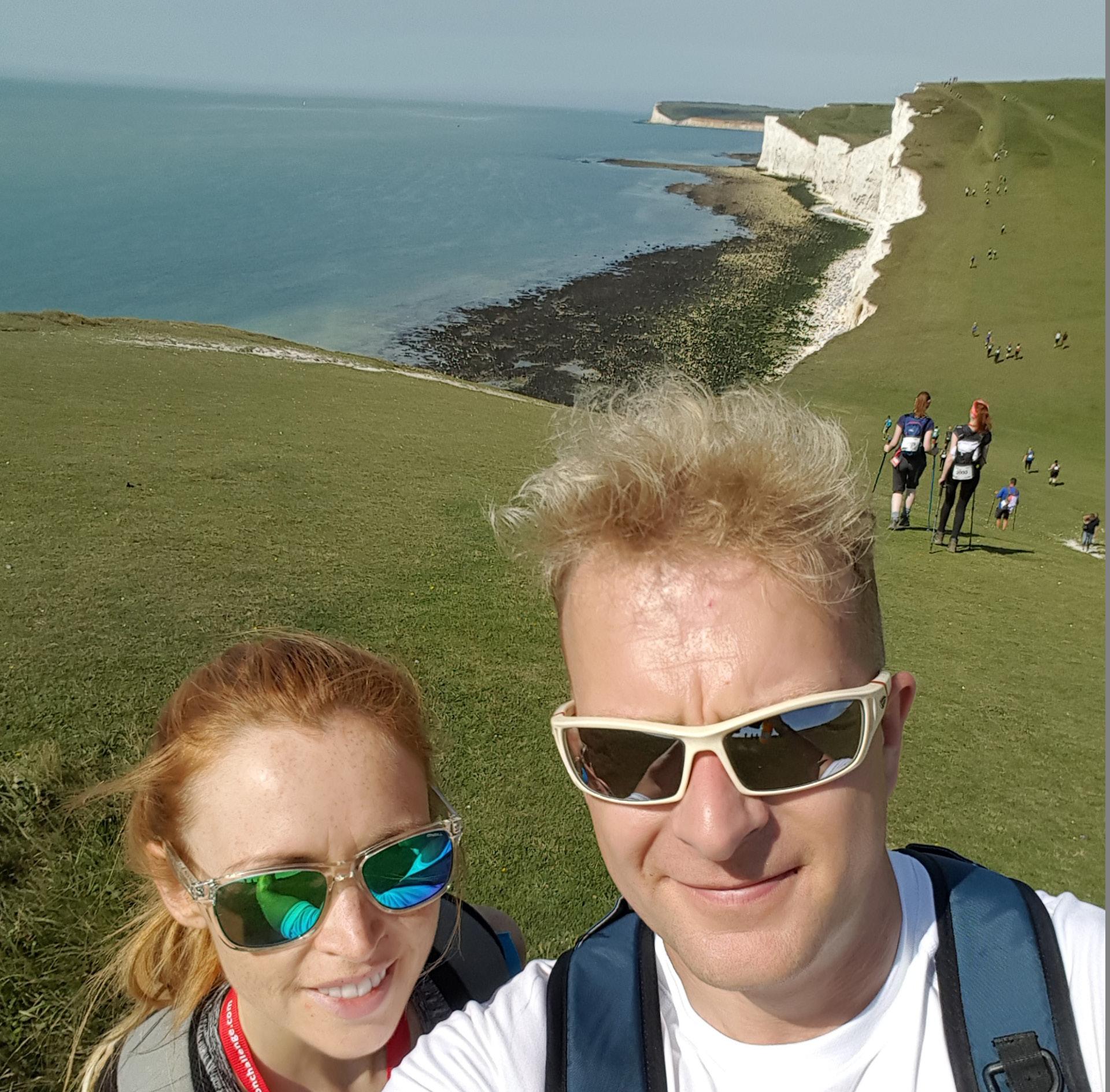
Cat was diagnosed with a low-grade brain tumour in August 2014 but, following surgery and a biopsy, her family and friends were devastated to learn that the tumour was cancerous, although slow-growing.
Tragically, Cat passed away last June after the tumour stopped responding to chemotherapy treatment.
Nathan and Christina decided to do something in Cat’s memory and their love of walking led them to take on the South Coast Ultra Challenge, along with nearly 2,000 other intrepid walkers.
The first part of the walk was incredibly hilly following the coastal path, which went along the Seven Sisters and past Beachy Head. After a rest stop at Birling Gap, they went inland and followed the
Cuckmere River to the midway check point. The sunny conditions caught them by surprise and took its toll with red necks and burnt legs, arms and shoulders.
They continued to walk late into the evening and reached Hove at around 9.15pm, 55km into the 100km challenge, having walked for just under 12 hours. After less than five hours’ sleep, they set off at 6am with 250 people for the final day of walking.
Christina commented: “Wereachedour finaldestinationinArundel,having completed100kmsin22hrs55mins withblistersontopofblisters,plenty ofsunburn,andamissingtoenail!”
Cat’s father, Rab Anderson, added: wouldliketothankNathanandChristina

JOIN IN, DONATE, help us fund the fight. Together we will find a cure

fortheirmonumentaleffortinwalking 100kmsinunder24hrstoraisemoneyand awarenessforBrainTumourResearch.We areespeciallytouchedthattheycarriedCat’s memorywiththemontheirjourney.Itwas afantasticachievementandjustthetypeof thingCatwouldhavelovedtotakeon.”
Cat has also been the inspiration for our latest pin badge. Please order the CatInA badge through our ebay shop and wear
www.braintumourresearch.org
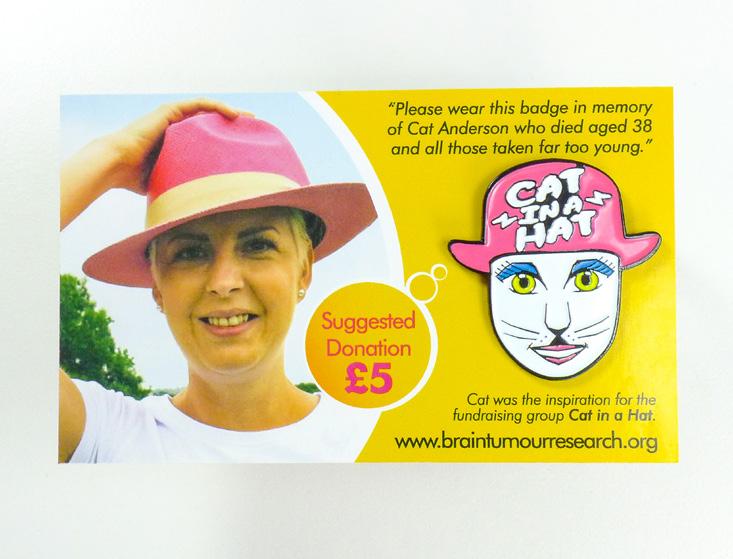

FUNDRAISING GROUPS
6 Spring 2018

LOVING DAUGHTER CREATES NEW FUNDRAISING GROUP
On the first anniversary of his death as a result of a brain tumour, Chris Todd was remembered with the launch of a new Fundraising Group dedicated to helping find a cure for the disease.
In Chris’ Memory was launched in November with a Memorial Auction Evening in Whitehaven
Chris was a loving husband and muchloved father and grandfather. He was 63 when he was diagnosed with an aggressive grade-four glioblastoma multiforme brain tumour after suffering violent headaches and stroke-like symptoms.
Chris underwent treatment including surgery, radiotherapy and chemotherapy. At one point, he had an operation lasting 10 hours. It went well and 80% of the tumour was removed. Although Chris fought his illness with the support of his family, he sadly passed away in hospital in November 2016 at the age of 65.
During the family’s tragic journey, Chris’ daughter, Vicky, started raising funds for research to help find a cure for brain tumours. She said: “Whendadwasdiagnosed,Ijustcouldn’t understandhowthiscouldhappen.How cansomanypeoplehavebraintumours yetsolittlebeknown?Iwasflabbergasted tolearnthatbraintumourskillmore

fund a research centre to put an end to brain tumours
childrenandadultsundertheageof40 thananyothercanceryetreceivesolittle funding.Howcanitberightthatjust1% ofthenationalspendoncancerresearchis allocatedtothisdevastatingdisease?”
Determined to put all her energy into doing what she could to raise money for research, Vicky set up the Fundraising Group, InChris’Memory . She explained: “Icannotsitbyandwatchthis happensoIsetaboutraisingfundsforthe charityBrainTumourResearch.I’vedone amarathon,halfmarathons,acakesale forWearAHatDay,acharityauctionand evenasponsoredskydiveinLasVegas, althoughIamterrifiedofflying!Isetoutto raise£10,000inayearbutIhavealready smashedthat.”
Vicky and her family have already raised nearly £24,000 for BrainTumourResearchand aim to raise at least £5,000 each year through their new Fundraising Group.
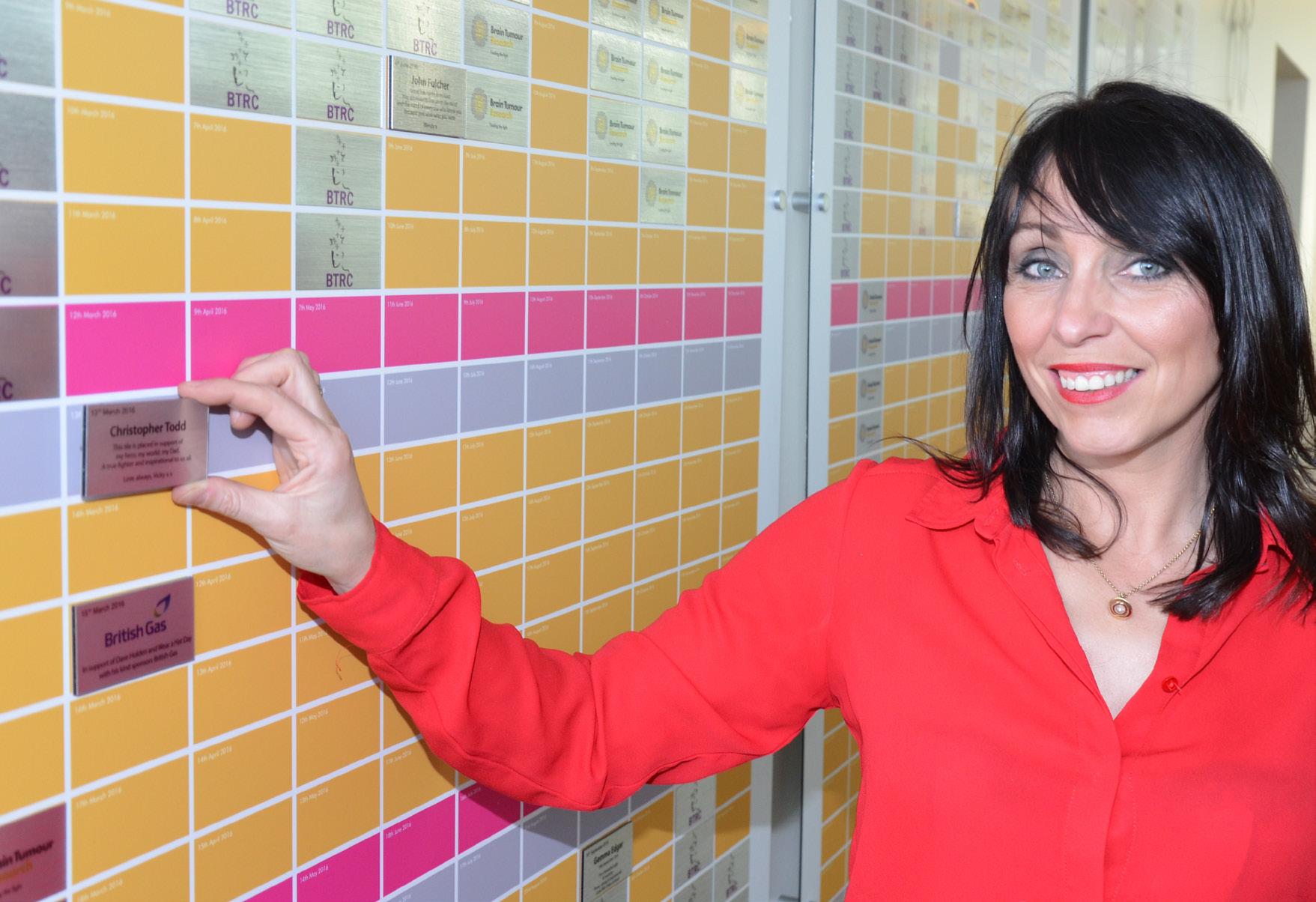
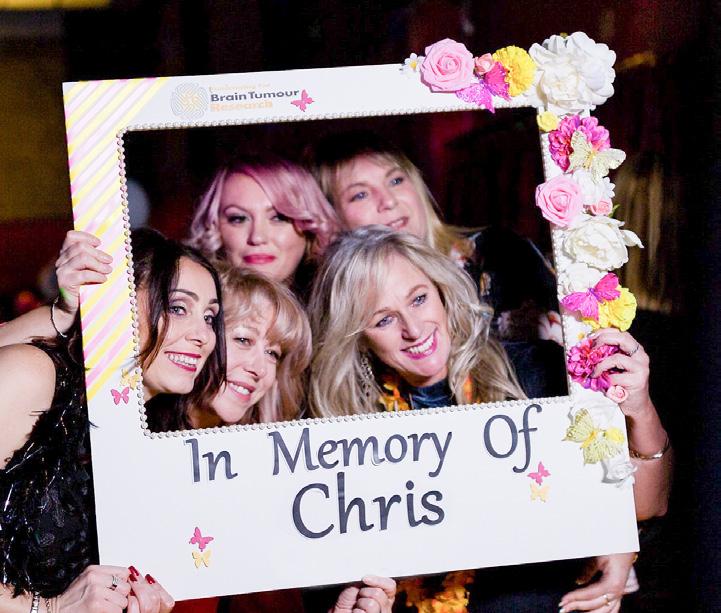
www.braintumourresearch.org Spring 2018 7
CELEBRITIES CALL FOR YOUR SUPPORT
Once again this year, we’re very grateful to the celebrities who’ve agreed to sport our iconic pink top hat to promote the UK’s premier brain tumour research fundraising event. We’ve teamed up with businesswoman, model, actress, and television personality, Caprice; actor and author, Sheila Hancock CBE, and performer, Debbie McGee. We thank them all for their fantastic support.



Caprice revealed she had been diagnosed with a brain tumour in April 2017, after an accident on the TV show, TheJump. She recalls: “Ihad headachesthatwerenotgoingawayandmy visionwasbeginningtoactup.”


Caprice explains what went through her mind as doctors broke the news: “It was the most terrifyingmomentofmylife.Ihavealways beenprettyhealthysoIcouldn’tbelievewhat theyweretellingme.Ijustthoughtabout mytwolittleboys,four-year-olds,Jaxand Jett.” Following successful surgery to remove the tumour, Caprice is now continuing to be monitored by her medical team.
Sheila Hancock has been a patron of our Member Charity Ali’sDreamfor over a decade and is one of our most dedicated supporters. She and her family always show their support for Wear A Hat Day and we thank them all. Sheila’s grandson, Jack, was diagnosed with a brain tumour in 1999. It was low-grade and was successfully removed.

Debbie McGee, StrictlyComeDancing finalist and performer, became involved with BrainTumourResearch after her husband of 28 years and TV magician, Paul Daniels, died of a brain tumour at the age of 77 in March 2016.
Keep your eyes open for these famous faces looking out at you from our jazzy posters on the London Underground and the national rail network during February and March. But don’t just do that – JOIN THE FUN AND GET INVOLVED.
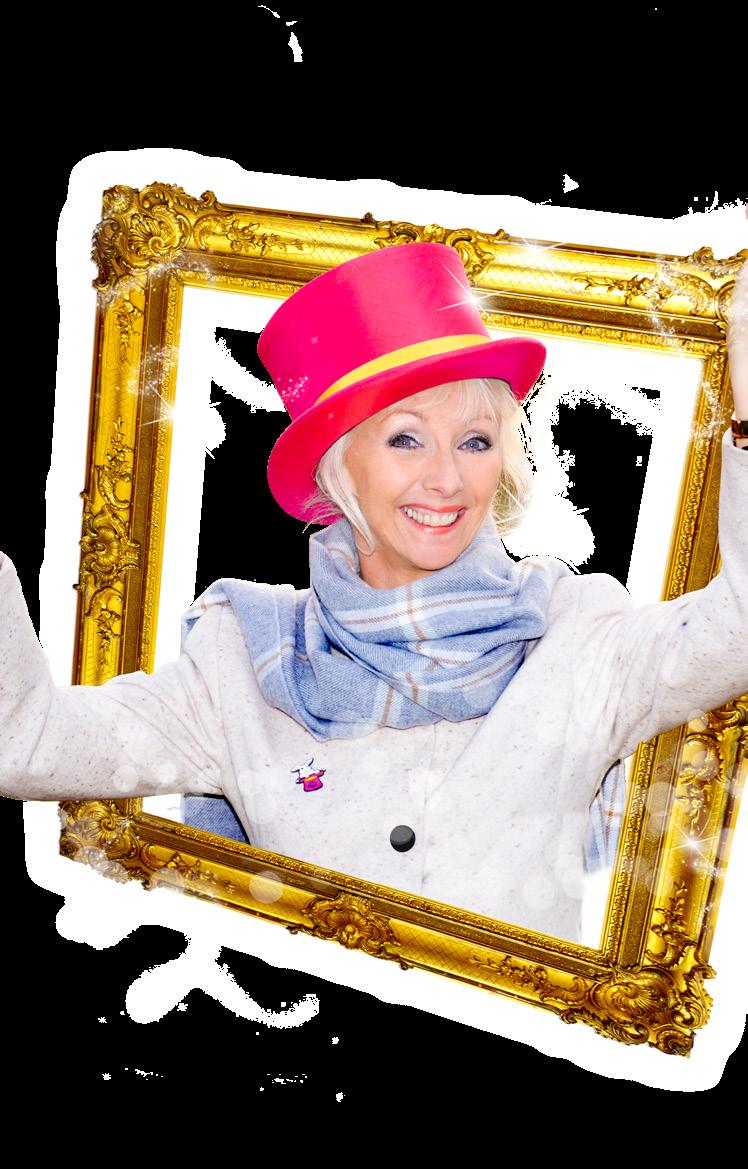


8 Spring 2018 www.braintumourresearch.org WEAR A HAT DAY 2018







We’re also continuing our Wear A Hat Day tradition of working in partnership with another renowned milliner to produce a new limited edition brooch to sell alongside our other hattastic merchandise. This year is no exception. We’re delighted to be working with award-winning Noel Stewart – a London-based milliner with an international reputation. Noel attended the Royal College of Art and is now a visiting lecturer at the college. He also worked for both the Queen’s milliner Philip Sommerville and Stephen Jones OBE. While with Stephen, his time included being his assistant at Christian Dior Haute Couture, John Galliano and Louis Vuitton.


We thank Noel for taking the time to work with us, and helping us in our cause. We are delighted with the striking multicoloured brooch (featured above) which beautifully captures the sophistication of Noel’s original. The new brooch is limited to a run of 500 and each one comes with a Certificate of Authenticity. We’re sure it will sell out quickly so secure yours now for a suggested donation of just £10.
To order your brooch, visit our website www.braintumourresearch.org/signature-brooches

Taking inspiration from contemporary art and architecture, Noel is famous for continually modernising millinery to create a fresh and elegant approach to how we dress the head. His collections combine luxury materials and traditional craftsmanship with contemporary innovation. Off the catwalk, Noel has acquired a loyal fan-base. His hats have been worn by Keira Knightly, Lady Gaga, Florence Welch, Kylie Minogue and Beth Ditto.
Talking about his involvement in Wear A Hat Day, Noel told us: “IhavebeenawareofWearAHatDayformanyyearsandIam convincedoftheneedtofundvitalbraintumourresearch.Iam sopleasedtobejoiningtheillustriouscompanyofmillinersthat havesupportedthiscampaignandhopewearingthebrooch, inspiredbymydesign,bringspleasure.”

29MARCH
THURSDAY 2018
TH
In previous years, we’ve had the privilege of working with some of the most highly-respected milliners in the country, including: Philip Treacy OBE, Rachel Trevor-Morgan, Vivien Sheriff, Stephen Jones OBE, Piers Atkinson and the oldest hat shop in the world, Lock & Co. of London.
Registering to take part has never been easier, thanks to our fantastic new website www.wearahatday.org Sign up today, start planning your fundraising event and look out for your fundraising pack in the post. In the meantime, our website has lots of ideas to inspire your Wear A Hat Day plans!

www.braintumourresearch.org


TEAMING UP WITH HOBBYCRAFT FOR A HATTASTIC PARTNERSHIP!
We are extremely excited to announce that once again we’ve teamed up with Hobbycraft, the UK’s largest craft retailer, for Wear A Hat Day 2018. Wear A Hat Day is the UK’s premier brain tumour fundraising event and will take place on Thursday 29th March.


Hobbycraftwill also be selling a special ‘Side Hat’ fascinator, with a percentage of this income being donated to BrainTumourResearch.

In the run-up to the day itself, Hobbycraft’s network of 91 stores will display boxes of our Wear A Hat Day pin badges at their till points. With new designs added every year, our badges have become popular collectors’ items for young and old alike. Each badge can be obtained for a minimum £1 donation but people often drop lots more coins into our collection boxes!
On Saturday 24th March, Hobbycraftstores up and down the country will be hosting hattastic workshops so why not let yours and your children’s imaginations run wild, having fun and creating amazing hats using Hobbycraftproducts? Please enquire at your local store for more details! Hobbycraftwill also be running an exclusive Make It hat-making competition for schools with winners announced on Wear A Hat Day.



www.braintumourresearch.org
Robin Meltzer, our Director of Fundraising, said: “It’sgreatthatfamiliesandschools cangointoHobbycraftstorestohavefun sticking,paintinganddecoratingwhile raisingmoneyforvitalresearchinto findingacureforbraintumours.”
Last year, Hobbycraftraised over £15,000 for Wear A Hat Day 2017 and will place tiles on each of the Walls of Hope at our four Centres. In December, representatives of the retailer were invited to a special lab tour at our Imperial College Centre of Excellence. David Westman, Marketing Manager for Hobbycraft , said: “Wereallyenjoyed thelabtour–itwasamazingto seetheresearchinaction.”



optometrists can be at the front line of diagnosing brain tumours

“Many SpecsaversstoreshavetakenpartinWearAHatDayforseveral yearsandwe’rehopingthatthroughthisnationalsponsorship, manymorebrancheswillnowtakepartinWearAHatDay2018.”
WEAR A HAT DAY 2018




GET YOUR THINKING CAPS ON!

Don’t forget to join the party on social media. Post on Facebook, Twitter and Instagram to raise awareness of brain tumours, Brain Tumour Research and Wear A Hat Day.
Use the #WearAHatDay #Hattastic #FundTheFight and #CloserToACure hashtags to get everyone’s efforts trending.
This year’s Wear A Hat Day is fast-approaching and people across the country will be donning their favourite headgear in March to raise funds to fight brain tumours.
Register today at www.wearahatday.org and request your event organiser fundraising pack, which includes everything you’ll need to promote and decorate your event. Get your friends, neighbours and children involved – even your pets!

29MARCH THURSDAY 2018
As a starter, here are some great ideas for fundraising events:

Wear a Hat. Ask your friends and colleagues to wear a hat and make a donation. It’s quick and easy to donate by text – simply text Hat to 70660 to donate £5 (see our website for terms and conditions).
Coffee Morning, Hatty Lunch, Big Hatty Bake-off or Afternoon Tea. Get the taste buds going and the donations flowing!

Hold a Raffle. Everyone loves a good raffle. Grab a few prizes and charge £1 per ticket.
Hattastic Fashion Show. Get crafty and make your own hats and turn your ideas into a fashion show.
Hat Quiz. Download ideas from our Hatter’s Workshop www.wearahatday.org
#HatSelfie Photobooth. made selfie kits are perfect for your event!
Hatty Walkabout. Get sponsored. Every step brings us closer to a cure.
Easter Bonnet Parade. for your children’s schools.
TH



Hat throwing contest. friends and neighbours can throw a hat with a contest at your local park.
‘Create Your Own Hat’ Competition. Get your thinking caps on for this one.
Famous Hats Film Night. Willy Wonka, Indiana Jones, Sherlock Holmes… who will you be?
Sell Our Merchandise. Make your event extra special with our range of Wear A Hat Day merchandise. Pop over to www.wearahatday.org
at our great range of pin badges, limited edition brooches, baseball caps, wristbands




www.braintumourresearch.org Spring 2018 11
First day at school
The story of Lyra Cole took the media by storm last September as pictures of the confident and excited four-year-old on her first day at school hit the headlines. The story was seen by millions of people in the Daily Mail, the Guardian, the Sun and the Daily Express – as well as in the regional media where Lyra lives in Somerset. It was also featured on BBC Radio 5 Live.
It was no ordinary first day at school for Lyra and one that her parents had feared might never come. Little Lyra was just five months old when she underwent emergency surgery to remove a brain tumour that had been repeatedly misdiagnosed as a virus. After various doctors’ appointments, Lyra lost her appetite and developed a rash. She also became very tired and started vomiting two or three times each day. Her parents, Dan and Ellie, took her to hospital where meningitis was suspected –until a CT scan revealed she had a tumour the size of a small orange growing in the back of her brain. Lyra was diagnosed with a low-grade choroid plexus papilloma, a rare form of brain tumour that can particularly affect infants. She quickly underwent surgery lasting 11 hours.
Although the surgery was successful, within months Lyra was struggling to see. Just a month after her first birthday, she underwent surgery to remove a cyst growing on her optic nerve, a complication from her earlier operation.
Since her last operation in 2014, Lyra has recovered well. Her MRI scans and check-ups are now just an annual occurrence.

www.braintumourresearch.org

She has grown to adore gymnastics and dancing, and she loves talking to people. Doctors have told Lyra’s parents to treat her as if the brain tumour never happened. It’s very unlikely that a tumour of this type will come back so Dan and Ellie try not to panic –but they did take Lyra to hospital after she recently fell off a bouncy castle and banged her head!
Lyra’s story about growing up and heading off to school after everything she’s been through is powerful and emotional. It reached millions of people and helped significantly raise awareness of brain tumours.

THE POWER OF RAISING AWARENESS
12 Spring 2018
IF YOU HAVE A STORY YOU’D LIKE TO SHARE, PLEASE CONTACT US. Either email media@braintumourresearch.org or call our media team on 01908 867200 to discuss how we can help.


GIVE OLD MONEY NEW LIFE
The old round £1 coin is no longer legal tender. However, the great news is that we're working with our recycling partner, Recycling for Good Causes to put them to good use and generate much-needed funds.
So, clear out your drawers, empty your money boxes and dig down the back of the sofa!
If you find any round pounds, simply contact...


Call: 0800 633 5323 (Freephone)
Email:
www.recyclingforgoodcauses.org/appeals-2 Round Pound Appeal
info@recyclingforgoodcauses.org Visit:
BLOOD- BRAIN BARRIER
One of the key challenges associated with the development of new drugs to treat brain tumours is to ensure that they can reach the site of the tumour. The brain is surrounded by a membrane called the blood-brain barrier (BBB) that serves to protect it from toxic substances which might be present in the blood.
The brain is more sensitive to these chemicals than other organs in the body. However, the BBB also prevents some drugs from entering the brain. So drugs, which are used effectively to treat cancers in other parts of the body, might not be physically able to reach brain tumours.
In order to screen potential new drugs, we need to be able to ensure that they will get into the brain to target the tumour. To achieve this, Professor Geoff Pilkington’s team at our Research Centre at the University of Portsmouth has developed a 3D all-human model of the blood-brain barrier using human cells. Zaynah Maherally at the Portsmouth lab has recently published details of the model and demonstrated how it closely resembles the normal human BBB*. In particular, she demonstrated that it exhibits a specific form of electrical resistance that is identical to that observed in the normal brain.
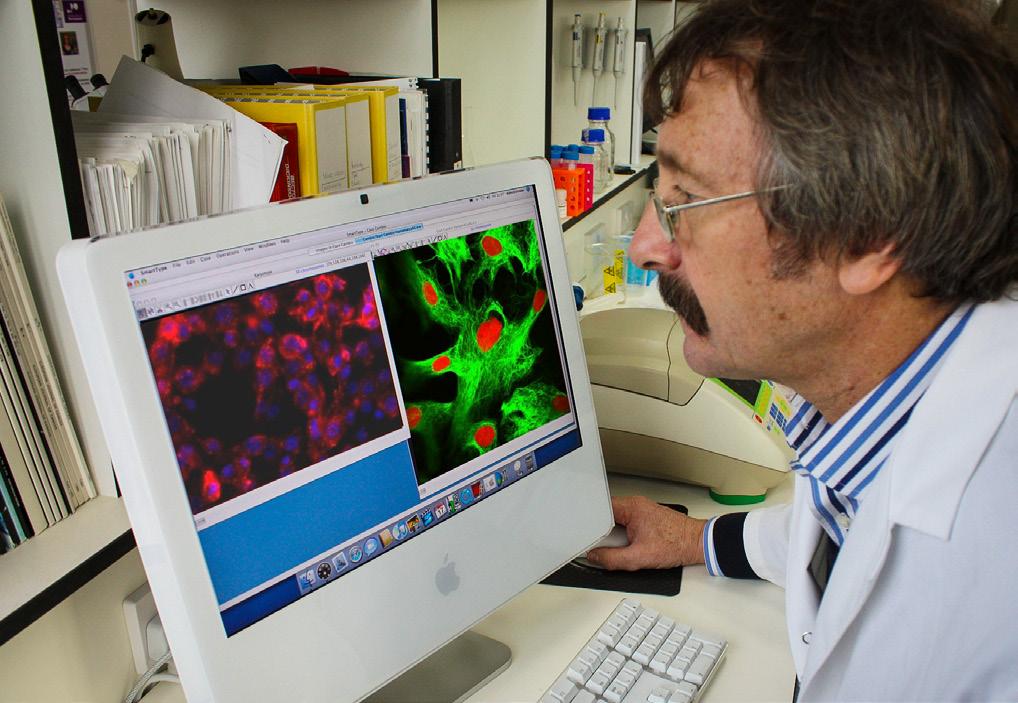

This model system can now be used to identify which drugs can cross from the blood into the brain and it will help to speed up our ability to predict which ones might be more appropriate for further screening as potential antitumour drugs. But the model can also be used to assess what happens if the BBB is damaged, and how this might influence which drugs can specifically access the site of a brain tumour.
This is particularly important following the recent report of an early stage clinical trial that demonstrated that olaparib, a drug which is currently used to treat ovarian cancer, can actually access some brain tumours. This contradicts previous studies showing that the drug cannot cross the BBB. The researchers suggested that damage to the BBB in the area of the tumour could actually make it leaky and allow drugs to cross and access the tumour. The Portsmouth model will provide a tool to mimic changes in the BBB in the vicinity of a tumour and help to identify new and more effective therapies.
*Maherally Z etal(2017). Real-time acquisition of transendothelial electrical resistance in an all-human, in vitro, 3-dimensional, blood–brain barrier model exemplifies tight-junction integrity.

RESEARCH UPDATES
14 Spring 2018 www.braintumourresearch.org
THIRD ANNUAL RESEARCH WORKSHOP
The Brain Tumour Research third annual research workshop took place in September with 28 researchers attending from our four Centres of Excellence, as well as members from BRAIN UK, the tissue banking facility that we also fund.
The theme of the meeting was collaboration, as it’s important to realise that we not only fund individual research programmes but rather support a network of experts, thereby facilitating true research partnership and joint working.
The two-day meeting opened with presentations from each of the Centres. In particular, they highlighted their key achievements over the previous 12 months, whilst underlining the opportunities to collaborate with the other Centres by identifying common research themes. It was obvious from the presentations that there is an increasing number of joint research projects underway, resulting in joint publications and knowledge sharing.
One of the most important parts of the workshop was the poster session when the younger researchers were given the opportunity to present and discuss their research in greater detail with the other participants. This allowed for detailed face-to-face discussions about specific research that’s being carried out.

There was a real buzz of excitement in the room with a lot of animated discussions about how the researchers could combine ideas and expertise to further develop the existing research and generate new ideas for novel future joint research studies that will bring us closer to a cure.
Our mission is to build a network of experts in sustainable brain tumour research and develop the next generation of world-class neuro-oncology researchers. In our quest to increase the national investment in brain tumour research we invited representatives from CancerResearchUKand the MedicalResearchCouncilto talk with our young researchers to make them aware of the funding that’s available, and how they could go about applying for research grants.
Accessing funding from the Government and larger cancer charities is key to increasing the national investment in brain tumour research. Your fundraising efforts are vital to the development of new research groups that will increase the UK’s capacity to carry out vital work in this area. BrainTumourResearchplays a pivotal role in this process and provides support
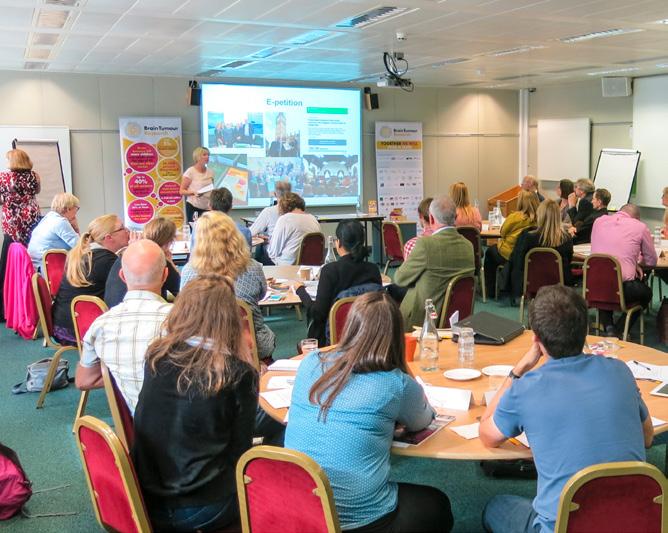

www.braintumourresearch.org Spring 2018 15
CENTRE PUBLICATIONS HELP SPREAD KNOWLEDGE AND FACILITATE PROGRESS
A key role of the scientists at our Centres of Excellence is to publish research papers detailing the results of their work and the outputs of the funding we provide. These research papers are important in disseminating vital information to increase our understanding of brain tumours, highlight the progress being made in finding a cure and provide reassurance to donors and funders.
Our Centres have been busy over the past few months and a number of papers have been published with a focus on identifying the changes that occur in different types of brain tumours in order to develop new drugs. Here are just a few highlights.
Dr Rhiannon McGeehan at the University of Portsmouth has been investigating changes that occur in the mitochondria of tumour cells – these are the batteries that provide energy for the cells. Tumour cells require additional energy, so their mitochondria work harder and more efficiently. Specifically, she characterised the genetic material that is contained within mitochondria to determine the differences that might be present and whether this might predict how the cells could develop.
Researcher, PhD Student, Jade Lyon-Rimmer, was one of the team at our Plymouth Centre that worked in collaboration with a group in New York focusing on the Merlin gene, which plays a key role in the development of low-grade tumours including schwannomas, meningiomas and ependymomas. Mutations in this gene, which prevent it from working correctly, increase the risk of cells developing into tumours. The researchers
reported one of the biochemical consequences of the gene mutation and are now using this information to screen for drugs that might target this to kill the tumour cells.

In a parallel paper, they demonstrated that the PrP(c) protein might play a key role in tumours where the Merlin gene is no longer active. This is of particular interest, as PrP(c) is the key component involved in Creutzfeldt-Jakob disease and a lot of work has been done in this area, including the potential development of drugs that would act on this target. So, understanding the changes in tumour cells can lead us to identifying drugs that are already being studied for other diseases and which could also beat brain tumours.
It’s been a really exciting time at our Centres. We now need to maintain the momentum to build upon these results to start to develop new agents that might ultimately be used in the clinic to cure brain tumours.

References
McGeehan RE etal.(2017). Deep sequencing reveals the mitochondrial DNA variation landscapes of breast-to-brain metastasis blood samples. Mitochondrial DNA A DNA Mapp Seq Anal 15:111. doi: 10.1080/24701394.2017.1350950 (University of Portsmouth)
Provenzano L etal.(2017). Cellular prion protein (PrPC) in the development of Merlin-deficient tumours. Oncogene 36(44):6132-6142. doi: 10.1038/onc.2017.200 (Plymouth University)
Cooper J etal.(2017). Combined inhibition of NEDD8-activating enzyme and mTOR suppresses NF2 loss–driven tumorigenesis. Mol Cancer Ther 16(8):1693-1704. doi: 10.1158/1535-7163. MCT-16-0821 (Plymouth University)


RESEARCH UPDATES
16 Spring 2018 www.braintumourresearch.org

BRAIN TUMOUR SYMPOSIUM


If you’re interested in attending the 2018 symposium, please register at www.braintumoursummit.org

On 12th October, we presented the UK’s first joint Brain Tumour Symposium in partnership with brainstrust. The symposium was opened by Will Jones, Chief Executive of brainstrust, and Sue Farrington Smith, Chief Executive of Brain Tumour Research. Both shared just how much progress has been made in the last 15 years and the event provided an educational and transparent focus on the biggest issues facing the UK brain tumour community today.
In particular, the event reviewed and explained the progress that is being made on many fronts to improve outcomes for people living with a brain tumour.
Our Director of Research, Dr Kieran Breen, updated delegates on innovative treatments from around the world, while Consultant Neurologist, Dr Robin Grant from the Edinburgh Cancer Centre, focused on the top 10 priorities for research.
Founder and Director of Services at brainstrust , Helen Bulbeck, spoke eloquently about living well with a brain tumour as well as improving quality of life and supportive care, while our Head of Public Affairs, Carrie Hume, demonstrated how BrainTumourResearchis working with Parliamentarians to influence cancer policy at the highest levels.
Carrie Holbrook, an active supporter of both charities, bravely shared her story. Carrie was devastated when she lost her husband Steve to a brain tumour last year. She said: “Itwascomfortingtohear thatadvancesarebeingmade,althoughanyimprovementsintreatmentareallfartoo lateforSteve.Iamdeterminedtocontinuetoraiseawarenesstohelpbringaboutbetter outcomesforpatientssothatotherfamiliesinthefuturedon’thavetogothroughwhatwe have.LifewillneverbethesameagainwithoutSteve.Therewillalwaysbethatpartofour familymissingandIwon’trestuntilthereisacure.”
We’re very grateful to everyone who joined us at this memorable day. Our event was a great success and brought patients, carers, clinicians and researchers together to share knowledge and experiences. Feedback was overwhelmingly positive and we’re making plans for the UK Brain Tumour Symposium to become a major annual event.
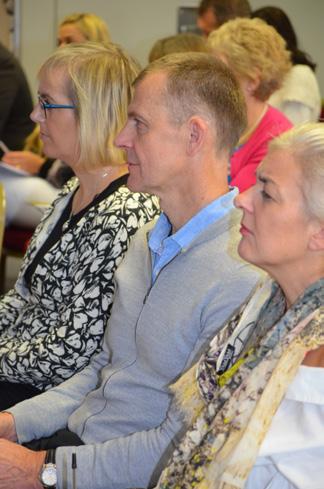

2017 SYMPOSIUM www.braintumourresearch.org Spring 2018 17
Send a Virtual Gift of Hope
Our scientists are working at the cuttingedge of research as they strive to find a cure for brain tumours. Why not celebrate a special occasion and, at the same time, help fund their vital research by buying and giving one of our range of Virtual Gifts of Hope? These gifts have been carefully selected to progress our research into the causes and possible treatments for brain tumours. Each one is an example of the support our researchers need and represent how your money could be used, and comes with a unique print-at-home certificate which you can personalise before you give.
£50

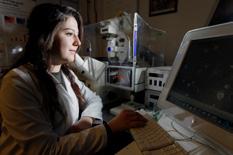


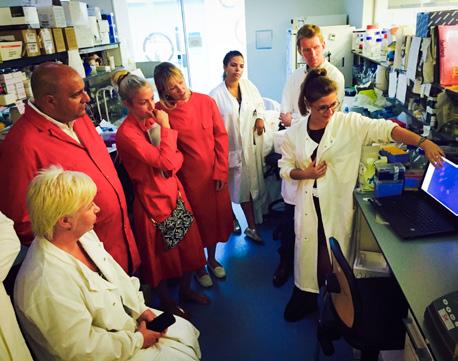
INVESTING IN LEADERSHIP – £50
A Senior Research Fellow running a Brain Tumour Research lab will develop their own world-class research as well as co-ordinate the output of PhD students. This gift represents the cost of an hour of their leading and important work.
ACCELERATING RESEARCH – £25
Progress in brain tumour research has been held back by low funding. This gift represents a morning’s work for a PhD student to carry out research in one of our Centres of Excellence, helping accelerate the future of medical research.
UNDERSTANDING BRAIN TUMOURS – £12
Our scientists grow cancer cells so that they can be used for experiments. They are cultivated at body temperature in tissue culture solution so that results are as true-to-life as possible. This gift represents the cost of another bottle of this media, allowing our essential research to continue.
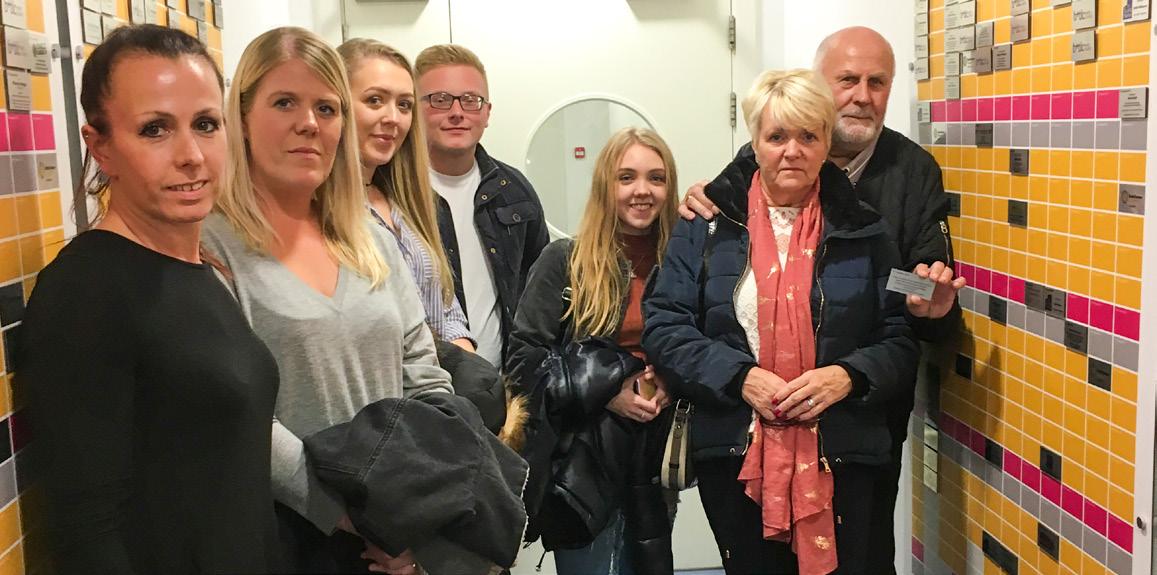

GIVE WITH CONFIDENCE
www.braintumourresearch.org 18 Spring 2018
Gift Certi cate Investing in Leadership A Senior Research Fellow running a Brain Tumour Research lab will develop their own world-class research as well as co-ordinate the output of PhD Students. This gift represents the cost of an hour of their leading and important work! This Gift of Hope has been bought on your behalf and is helping the fight against brain tumours. Brain Tumour Research, Suite 3, Shenley Pavilions, Chalkdell Drive, Shenley Wood, Milton Keynes MK5 6LB Tel: 01908 867200 | info@braintumourresearch.org | www.braintumourresearch.org Registered charity number 1153487 (England and Wales) SC046840 (Scotland). Company limited by guarantee number 08570737. Together we will find a cure £25GiftCerti cate This Gift of Hope has been bought on your behalf and is helping the fight against brain tumours. Accelerating Research Progressinbraintumourresearchhasbeenwoefullyslow. Thisgiftrepresentsamorning'sworkforaPhDstudenttoworkin oneofourCentresofExcellence,helpingtoacceleratethefutureof medicalresearchtoday! Brain Tumour Research, Suite 3, Shenley Pavilions, Chalkdell Drive, Shenley Wood, Milton Keynes MK5 6LB Tel:01908867200 | info@braintumourresearch.org | www.braintumourresearch.org Registered charity number 1153487 (England and Wales) SC046840 (Scotland). Company limited by guarantee number 08570737. Together we will find a cure £12 Gift Certi cate This Gift of Hope has been bought on your behalf and is helping the fight against brain tumours. Understanding Brain Tumours We grow cancer cells so that they can be used for experiments, cultivated at body temperature in tissue culture solution so that results are as true-to-life as possible. This gift represents the cost of another bottle of this media, allowing our essential research to continue! Brain Tumour Research, Suite 3, Shenley Pavilions, Chalkdell Drive, Shenley Wood, Milton Keynes MK5 6LB Tel: 01908 867200 | info@braintumourresearch.org | www.braintumourresearch.org Registered charity number 1153487 (England and Wales) SC046840 (Scotland). Company limited by guarantee number 08570737. Together we will find a cure Thank you for your support. To buy a Virtual Gift, please visit our website: www.braintumourresearch.org/donation/virtual-gifts


LONDON FREEMASONS AWARD SIX-FIGURE SUM TO SUPPORT VITAL RESEARCH
Brain Tumour Research has been awarded a £150,000 grant over three years by London Freemasons. It has come through the Masonic Charitable Foundation, which is funded by Freemasons from across England and Wales.


The six-figure sum will support vital research into glioblastoma multiforme which is one of the most common and deadliest forms of brain tumour. The grant will support Professor Silvia Marino, who leads our Centre of Excellence at Queen Mary University of London, and a collaborative team with colleagues at University College London’s Institute of Neurology studying the epigenetics of neural stem cells and high-grade gliomas. Her research is applying state-of-the-art techniques to study the cells that convert to form glioblastoma, in order to identify what it is that initiates this switch. The research particularly focuses on stem cells, which are found in almost every organ in the body. Stem cells can develop correctly into most types of specialised cells, such as skin, blood or brain cells, but they can also change to form tumours.

Professor Silvia Marino said: “Thisnewfundingallowsustotake ourworktothenextlevel,sowecanidentifyandcharacterise thekeydriversofglioblastomagrowthinsidethebrain.This willpavethewayfornoveldrugsdesignedtokillspecifically thecancercells-precisiontherapeuticswhichwillstopthe tumourinitstracks-andhavefewertoxicsideeffects.”
Adrian Fox from London Freemasons said: “We’reverypleased tobeabletosupportthishugelyimportantresearchproject. It’sextremelyencouragingthatthere’snowrealhopefor effectivetreatmentsforthemanythousandsofpeoplewhoare diagnosedeveryyearwiththesedeadlytumours.”
www.braintumourresearch.org Spring 2018 19
The soap followed Rita’s uncertain journey from the point at which she was given her initial shocking diagnosis all the way through to surgery and later being told her tumour was benign. The storyline prompted a huge reaction on social media with many glad to see awareness of the disease raised, and others questioning what a benign diagnosis really means for patients. At the time of writing, we do not know what else might be in store for Rita.
Corrie matriarch, Barbara Knox, said: “WhenourproducerKateOatestalkedto meaboutthebraintumourstorylinefor Rita,Iwastrulyhonouredtobetasked
RAISING AWARENESS THROUGH CORONATION STREET
In September 2017, iconic Coronation Street character, Rita Tanner, was diagnosed with a brain tumour. Rita, played for over 50 years by actress Barbara Knox, collapsed at her foster daughter Jenny Bradley’s hen-do, before being rushed into hospital. Following tests, doctors broke the news that Rita’s MRI scan showed a single lesion in the frontal section of her brain.

withtakingonsuchanimportantstory. Iwasimmediatelydeterminedtoensure thatwegoteveryaspectoftheportrayalof suchadevastatingillnesscorrect.Thework theteamdidwithBrainTumourResearch hasbeeninvaluable.Asanactressplaying therole,Iammindfulthattherearepeople goingthroughthisinreallifeanditisvital thatwedotheirstoriesjustice.
“UntilIstartedworkingonthisstoryline Ihadnoideathatabraintumourcould causesomeonetoactinthewayRitadid. Itcan’tjustbemewhohasbeensurprised byhowitaffectedRita,soclearlynot
Just 1% of the national spend on cancer research has been allocated to this devastating disease
Your influence makes a difference. Let’s find a cure for brain tumours TOGETHER
enoughisknownaboutbraintumours andtheirsymptoms.Itisafrightening diseaseandmythoughtsarewith everyoneaffectedbyabraintumour.”
20 Spring 2018 www.braintumourresearch.org SOAP STORYLINE

Brain Tumour Research had been consulting with the Coronation Street producers on the storyline since last Spring. Consultant Clinical Oncologist, Dr Matt Williams, from our Centre of Excellence at Imperial College, worked closely with Corrie writers to ensure that Rita’s experience was as accurate as possible.
He said: “IwasaskedbyBrainTumour ResearchandITVtohelpprovidesome medicalinputintotheirstorylineonRita’s braintumour.Ithasbeenafascinating experience,workingwiththescript-writing teamtotryandreflecttherealitiesof medicalpracticewithintheconfinesofa busyTVseries.Wehavebeenthrough multipleversionsofthescript,andmy aimhasalwaysbeentotryandreflectthe realityofabraintumourdiagnosisfor patientsandtheircarers.”
He continued: “Ourfocusisonprovidingthe bestcarewecan,whilealsodevelopingnew treatmentssothatinfuture,patientswill livelongerandbetter.HereatImperial, weareoneofthebestrecruitingcentres forbraintumourclinicaltrialsnationally, andourworkspansbasicandclinical research.Wehaveledseveralgroundbreakingprojects,rangingalltheway fromidentifyingspecifictumourmetabolic weaknessesanddevelopingvirusesto targetbraintumoursthroughtonovel surgerytechnologyandprize-winning studiesofnationalpractice.”


lost her husband of three months, Ted Sullivan, to the disease in 1992 in a storyline that demonstrated how devastating a brain tumour can be. Not only that, she has real-life experience of the disease as co-star and close friend Bill Tarmey, who played Jack Duckworth for more than 30 years, revealed his son Carl Piddington needed surgery to remove an aggressive brain tumour in 2010. Carl is still battling the disease and undergoing treatment.
The former publican and father of three children, said: “DadandBarbarabecameverycloseover theyearsandIknowthatshewasagreatsupporttohim.Veryfewpeopleknewthatthe reasonDadleftthecastin2010wasbecauseofmydiagnosis.”
Carl, who has raised tens of thousands of pounds for research and has campaigned with Brain TumourResearchat Westminster, also commented: “Daddideverythinghecouldtohelpraise awarenessofthediseaseandIoweittohimandtoallthemanyfamiliesinvolvedtodo whatIcan.There’sagoodchancemybraintumourwillgetmeintheendbutI’mnotgoing tositandwaitforit.”
www.braintumourresearch.org Spring 2018 21

EMPLOYEES STAGE CHARITY CYCLE EVENT


Last September, a band of over 40 cyclists from Altrincham-based construction specialists FK Group took on a cycle challenge of over 100 miles to raise £30,000 for Brain Tumour Research after a colleague’s wife was diagnosed with the disease.
The funds were raised by completing The Way of the Roses ride, which took them from Morecambe to York. The event was inspired by Sarah Gaffney Lang, aged 30, who was diagnosed with a gradetwo diffuse astrocytoma brain tumour in October 2016 at the age of 29. Her husband, Matt Lang, is Commercial Director at FK Group.
Sarah likes to describe herself as currently “inconveniencedbyabraintumour” Her diagnosis came after she became unwell during a day out at York Races. Surgery aimed at removing 95% of the tumour was unsuccessful and complications left her unable to walk. Physiotherapy and determination helped to
improve her mobility but further surgery was found to be impossible as it would have left her permanently paralysed.
Sarah said: “Althoughtheoperationhas changedmylife,Idonotregretit.Iput mytrustinsomeveryskilledpeopleand theirviewwasthatsurgerywastheright option.Thereisnobenefitinbeingbitteror negativeaboutwhathappened.Morethan anythingelse,mydiagnosismeansIhave gainedarealperspectiveonlife–what mattersandwhatreallydoesn’t.Iknow howmuchIamtrulylovedandhavebeen abletotellothershowIreallyfeel.



“Iamproudofmystrengthandproud ofeverythingIhavegotthroughsofar–surgery,chemo/radio,learningtowalk again– allwhilstwearingmyredlippy, whichalwaysgivesmeaboost.Ihavebeen justashappyduringthelastsixmonths asbefore.”
22 Spring 2018 www.braintumourresearch.org FUNDRAISING STORIES
Sarah has been documenting her life with a brain tumour and writing about style and beauty on her
blog www.zimmazimmathreecoursewinner.com
SISTER LEADS A NATIONAL THREE PEAKS CHALLENGE TEAM
Just 1% of the national spend on cancer research has been allocated to this devastating disease




Jessica was 23 and a newlyqualified teacher. Initially, she laughed off odd symptoms like forgetting the names of the children in her class and having a heightened sense of smell. Her family and friends never imagined that it all might add up to terminal cancer that would claim her life, aged just 27.
Her sister, Robby, led a team of six and completed the Three Peaks Challenge in July. They climbed three mountains, covering a total of 26 miles over 24 hours with zero sleep!
Their amazing effort raised over £18,300 for Brain Tumour Research
Robby remembers: “MylittlesisterJesshad alwayswantedtobeateacher.Shewas
brilliantwithchildrenandhadsuchplans forherlife,wantingmarriageand children,andwasalwayshealthy.”
When Jessica started feeling ill, it didn’t appear to worry her at all. Her GP initially diagnosed sinusitis but, after a few weeks of ongoing problems, a scan identified a mass in Jessica’s brain. After immediate surgery, the family had to face the devastating diagnosis of an aggressive, grade-four glioblastoma multiforme (GBM) brain tumour. Robby knew from the internet that ‘long-term’ GBM survival could mean just two years after diagnosis.
After her younger sister, Jessica, died of a brain tumour, Robby Hoffman was determined to do something positive in her memory. She also wanted to honour her friend’s mum, Nicki Waterman, a fitness expert and a columnist on The Sun who died from a brain tumour in 2016.

This time around, the future looked very bleak. An immunotherapy trial was aborted following a bleed on her brain, with Jessica going through five surgeries and several more bleeds on her brain during a single year.
Jessica endured gruelling treatment, including radiotherapy, chemotherapy and steroids. Initially, they seemed to be working and she eventually returned to school as a nursery teacher. Then, in March 2015, came the news that the family dreaded: her tumour had come back again.
Jessica died in May 2016. Robby concluded: “Wetriedeverything;afterallyouneed totrysomethingwhentheconventional medicinesdidn’tseemtobehelping.We couldseehergettingworseduringthe earlymonthsof2016.Hermobilitywas poor,leavingheruncoordinatedandprone tofallingover.Itstillfeelssurreal,likethe worsthasn’tactuallyhappenedandshewill walkthroughthedooragain.”
www.braintumourresearch.org Spring 2018 23
SIMPLYHEALTH GREAT NORTH RUN
In September, 35 people took part in the Great North Run on behalf of Brain Tumour Research. This iconic race from Newcastle to South Shields is the world’s biggest half marathon and saw thousands of spectators cheering our runners on to the finish.
Among our supporters were Anthony Niles, an infantry soldier, and his wife, Ellys, a full-time mum and former spa therapist. The couple’s two-year-old son Finlay had surgery to successfully remove a high-grade tumour.

amazeuseveryday withhisbravery andstrength.”

The runners who took part on behalf of Brain Tumour Research raised a fantastic total of over £40,000 between them.
Finlay’s symptoms, which included problems with balance and walking, were initially dismissed by a number of health professionals but he was finally diagnosed after he failed to meet various developmental milestones.
Ellys said: “Weneedtostaypositivefor Finlay;heisnotastatistic,heisourson and,fornowatleast,everysingledayheis gettingbetter.Hehascomesuchalongway comparedtohowhewasbeforethetumour wasremovedand,despiteeverything,he alwayshasahugesmileonhisface.Finlay isthemostlovinglittleboyandatrue inspirationtousandeveryonewhomeets him.Heisourlittlesoldierandcontinuesto
Sean Connolly, a greengrocer from Rothwell in Northamptonshire, also ran for us in the Great North Run. He was inspired to take on the challenge after he lost his friend, Alan Mills, to the disease.
Sean said: “Alanusedtocomeintothe shoptobuyhisweeklyfruitandveg. WegottalkingafterheaskedifIhad morepomegranatesashisdoctorhad recommendedtheirhealthbenefits. That’swhenhetoldmeabouthisbrain tumourandthathehadbeenadvisedto eathealthierfood.Hewassuchanice mananditwasgreatthatIgot toknowhimandhisfamily.Ihope myeffortswillhelpraiseawareness ofthecurrentunderfundingfor researchintobraintumours.”

RUN FOR RESEARCH AND HELP FUND THE FIGHT


24 Spring 2018 www.braintumourresearch.org
FUNDRAISING FEATURES
Phoebe’s family walk
On 30th September, seven-year-old Phoebe Vines from Tetford completed a challenge to walk 11 miles in memory of her mum, Becky, who died of a brain tumour last year.
Phoebe was part of a nine-strong team taking part in our Grand Union Canal Walk. Together with her grandparents Claire and Steve, cousins, friends and other family members, Phoebe raised nearly £3,000, more than enough to fund a day of research at one of our Centres of Excellence.
Phoebe set out to walk along the canal from the Three Locks pub in Stoke Hammond in Buckinghamshire, into Bedfordshire and back. Initially, the aim was to walk half the route but her energy and enthusiasm saw her complete the whole 11 miles.
At the Three Locks, walkers could buy bacon butties to start the day, enjoy a charity menu and partake of a specially created ale, “HopsforHope” . A percentage of both the menu and ale sales went to BrainTumourResearch

Grandmother Claire said: “Phoebe’senergy isagreatsourceofstrengthtous.She decidedtowalkthewholewaysayingshe was‘doingitforhermummy’.
“Beckywasaninspirationandalwaysso positive.Itissuchacomforttoseehow muchofherwonderfulpersonalityshe haspassedontoPhoebe.Althoughshe misseshermummydesperately,Phoebe isdeterminedtodoherbit.”

Becky was diagnosed with an aggressive glioblastoma multiforme brain tumour at the age of 23 and was given just a year to live. She underwent surgery and years of treatment, losing her fight in June last year at the age of 31.
This is the sixth year our 11-mile walk has taken place and 88 people came together to help raise over £18,500 for the fight against brain tumours.

somanyoldandnewfaces.LikePhoebe, Claireandherfamily,manyofthosetaking partknowonlytoowellthedevastationa braintumourdiagnosiscauses.Therewas astrongsenseoffellowshipandsharing ofexperiencesontheday,whichisavery positivething.”
Interested in organising a canal walk on 29th September? Please get in touch


www.braintumourresearch.org Spring 2018 25
Save the date of our next Grand Union Canal Walk 29 SEPTEMBER SATURDAY 2018 TH

Why not take on one of these exciting challenges to support our cause?
Sat 3rd February On Yer Bike Spinathon
Sun 4th March The Big Half, London
Sun 4th March Bath Half Marathon
Sun 25th March London Landmarks Half Marathon
Sun 1st April Plymouth Half Marathon
Sun 22nd April Virgin Money London Marathon
Sun 29th April Kiltwalk, Glasgow
Sat 5th May Isle of Wight Challenge
Mon 7th May Milton Keynes Half and Full Marathons
Sun 13th May Super Hero Run, London
Sun 20th May Simplyhealth Great Manchester Run
Sun 20th May Britain’s Ocean City Half Marathon, Plymouth
Sat 26th May London to Brighton Challenge
Sun 3rd June Kiltwalk, Aberdeen
Sat 9th June Great North Swim, Lake District
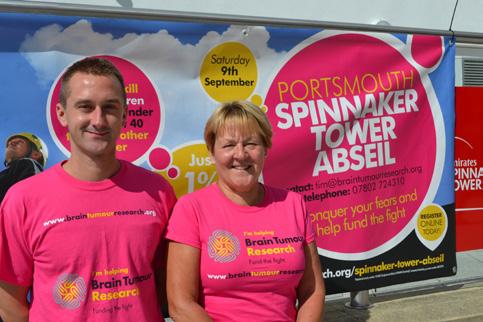
Sat 30th June Cotswold Way Challenge
CHALLENGES 2018




Sun 29th July Prudential Ride, London - Surrey 100
Sun 19th August Kiltwalk, Dundee
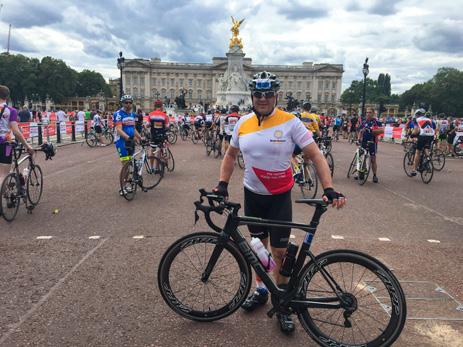
Sat 25th August South Coast Challenge
Sat 8th September Spinnaker Abseil, Portsmouth
Sat 8th September Thames Path Challenge
Sun 9th September Simplyhealth Great North Run, Newcastle
Sun 16th September Kiltwalk, Edinburgh
Sun 16th September BMW Berlin Marathon
Sun 16th September Swim Serpentine
Sun 16th September London to Brighton Cycle
Sun 23rd September Simplyhealth Great Bristol Half Marathon
Sat 29th September Grand Union Canal Walk, Milton Keynes

Sun 14th October Royal Parks Half Marathon, London
Sun 21st October Simplyhealth Great South Run, Portsmouth
December (TBC) Santa Run, London
Need further information?
Please get in touch with Sarah on either sarah@braintumourresearch.org or 01908 867200. She’s looking forward to hearing from you


26 Spring 2018 www.braintumourresearch.org
Visit www.braintumourresearch.org/calendar-of-events
you can’t see what you’re looking for, or if you fancy something else to pump the adrenaline like a skydive or a parachute jump, please check the Do it for Charity website (www.doitforcharity.com) and fundraise for us with the challenge of your lifetime!
Whether you’re into running, walking, cycling or abseiling, there’s bound to be something to get you moving in 2018. Get involved and join our fantastic
If
help.
and will be happy to


KEEP IN TOUCH SUBSCRIBE TO OUR E-NEWS



Recent issues have featured:
• Campaigns and appeals
Wear A Hat Day 2018 campaign the biggest and best so far.

• Inspirational stories – how celebrity friends Denise Van Outen and Lydia Bright got together for a Himalayan trek that raised over £8,600 for BrainTumourResearch
• Research updates – the latest news on research developments, lab tours at our Centres of Excellence, the vital work they undertake and scientific workshops.
• Our Brain Tumour Symposium – a report on the UK’s first joint symposium in partnership with brainstrust . Experts came together to focus on the biggest issues currently facing the UK brain tumour community.
• Campaigning update – a summary of our attendance at last Autumn’s party-political conferences, including some of the politicians who agreed to take our pledge to champion the brain tumour cause.
• Tell Me About – a spotlight on a series of videos featuring our Director of Research, Dr Kieran Breen, to help demystify some of the key terms and phrases used in the world of brain tumours.
• New Fundraising Groups – a celebration of the founding of TheMickyDeansTrust , established after 49-year-old Micky passed away from a glioblastoma multiforme last year.

• Merchandising latest – an update on our new accessories and other merchandising designed to make your fundraising as successful as possible.
Your support is helping us build a network of experts in sustainable brain tumour research. We would love to keep you posted through our weekly email newsletter.
E-news is a great way of keeping in touch with what’s going on and bringing people in the brain tumour community together. It includes topical news, real stories, fundraising ideas, research developments, campaigns, appeals and much more. It was also instrumental in galvanising people to sign our recent successful e-petition calling for more investment in national brain tumour research.
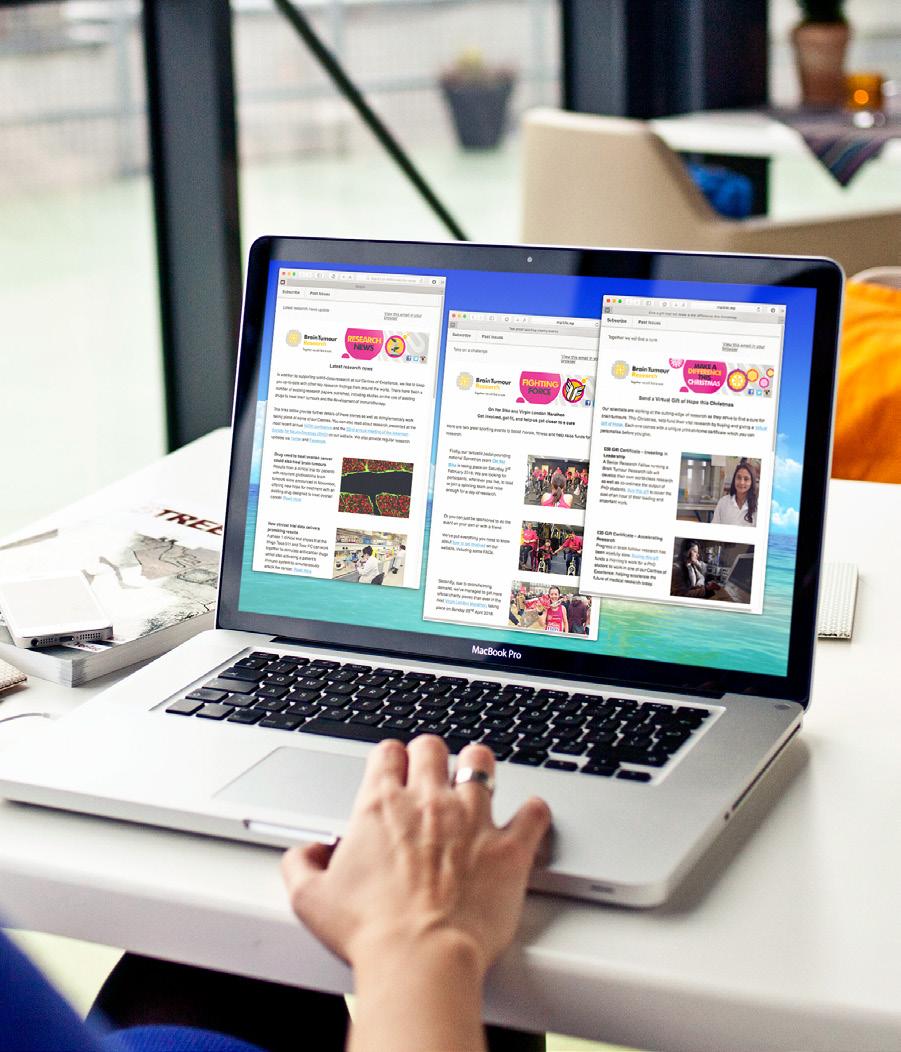
Keep up-to-date and sign up for e-news today. It’s quick and easy. Please visit our website: www.braintumourresearch.org/subscribe
We will only use your details in adherence with our privacy policy. We will never give your information to other organisations to use for their own purposes. You are free to change your mind at any time.
www.braintumourresearch.org
Spring 2018 27
AUSTRALIAN BRAIN CANCER MISSION LAUNCHED

The new mission came weeks before the publication of an important report by an Australian parliamentary Select Committee, which investigated cancers with low survival rates. The committee was led by Senator Catryna Bilyk, a survivor of two benign brain tumours who was diagnosed only after she collapsed outside her home in 2008, and so has personally championed the need for progress.
The strategy sets out key funding priorities including more investment into clinical trials, drug discovery work and expanding international collaborations. The latter is crucial for trialling promising drugs because it means brain tumour patients with specific tumour types can be included from different countries, which increases the sample sizes.

One of the most significant obstacles to finding a cure for brain tumours is the chronic underfunding of research so crucial for progress for researchers in the UK and abroad. A beacon of hope shines in Australia however, with the announcement of a £60 million strategy to double brain tumour survival rates and improve patients’ quality of life. Called the Australian Brain Cancer Mission, the initiative will see the Australian Government, charities and scientists collaborate to improve the lives of brain tumour patients, down under and around the world.
The similarities with the genesis of, and our hopes for, the UK’s Department of Health Task and Finish Working Group on brain tumour research is striking. Brain tumours kill more children and adults under the age of 40 in Australia than any other cancer, the same devastating impact as felt in the UK. Both reports have identified similar obstacles including funding levels, research infrastructure and the development of research community leadership, and have been brought about through a passionate and personal spotlight on the injustices inherent in the disease.
Thanks to the persistence of our UK community, our campaigning secured the Westminster Petitions Committee debate in April 2016 and the Department of Health Working Group which is now delivering credible results in the UK as
well. Last June, CancerResearchUKcommitted to investing £25 million into brain tumour research over the next five years. We hope these results continue, with governments and cancer charities of all sizes continuing to invest more into funding the fight against this devastating disease. With countries like Australia leading the way in committing dedicated funds, their example can only encourage others to do the same in the UK and abroad. Wherever advances in brain tumour research take place, we can be confident that future discoveries and innovative treatments will benefit brain tumour patients and their families around the world.
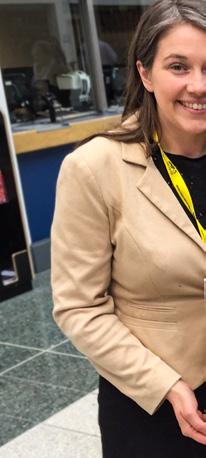


28 Spring 2018 www.braintumourresearch.org CAMPAIGNING

BECOME A COMMUNITY ACTIVIST AND CAMPAIGN WITH US
Your first contact is especially important. All politicians have lots of demands on their time. Meeting them can help keep the fight to improve outcomes for brain tumour patients and their families high on their priorities. All MPs have a local office so you don’t have to go far to meet them.
Here are some tips to help you join our other Community Activists in coming together as one voice:

Supportersatpartypolictical conferences2017(topto bottom):AileenCampbell MSP,SNPConference, KevinBrennanMP,Labour Conference,andNorman LambMP,LiberalDemocrat Conference.
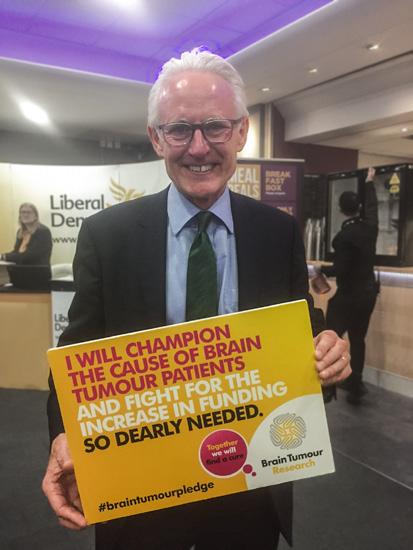

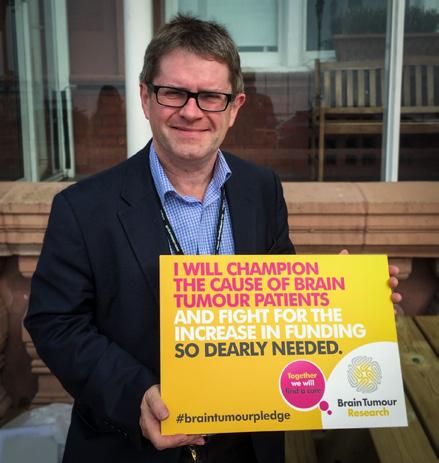
If you’re interested in contacting your local MP or helping to fight the underfunding of brain tumour research, please register your interest in becoming one of our Community Activists at: www.braintumourresearch.org/campaigning/campaign-with-us
You can also either email campaigning@braintumourresearch.org or call 01908 867200.
In the last issue of Believe magazine, we wrote about how important it is for people like you to meet with their local MP, in order to help raise the profile of our cause.
It’s a great help. For example, we know that those MPs who have actually met constituents with a brain tumour story are far more likely to support us, and that many of those MPs who have signed our brain tumour pledge have done so after being contacted by someone with a brain tumour story.

PARLIAMENTARIANS RE-CONFIRM THEIR SUPPORT
In our last magazine, we reported on the re-establishment of the All-Party Parliamentary Group on Brain Tumours (APPGBT) and its July meeting.
Following the snap general election, new APPGBT officers were elected by their fellow Parliamentarians, with future elections taking place annually.
Led by the new Chair, Derek Thomas MP, officers oversee the Group’s activities and promote the issues of the brain tumour community across Parliament and beyond. We look forward to continuing to support them in our role as secretariat to the group.
Derek Thomas MP (Chair)
Derek (picturedabovewithourChiefExecutive) became Chair in 2017 after Rebecca Harris MP stepped down to become Conservative Party Assistant Whip. Derek has been a supporter of the cause for a number of years, after he was made aware of brain tumours by a constituent. Before being elected an MP, he visited our Research Centre of Excellence in Plymouth. During Prime Minister’s Question Time he asked the Prime Minister to declare her support for brain tumour patients and the pursuit of funds for research. Derek has been involved in fundraising, including for our Wear A Hat Day in 2016 and 2017. This year, Derek led the signing of our #BrainTumourPledge and continues to champion the cause.
Kevin Brennan MP (Vice Chair)
Kevin has been associated with the APPGBT since 2010, after he was contacted by a constituent whose teenage daughter was diagnosed in 2009. He re-confirmed his commitment last year by signing our #BrainTumourPledge at the


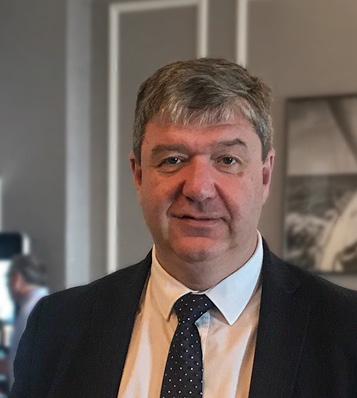
APPGBT officer post once again. Kevin has been a strong supporter over the years, playing a key role in the Westminster Hall debate of April 2016. He has held senior positions within the Labour Party and also a number of Ministerial roles when Labour was last in Government. Kevin has also personally raised considerable funds for charity through a Parliamentary rock band!
Alistair Carmichael MP (Vice Chair)
Alistair has a long history of fighting for brain tumour patients, initially as a result of meeting a constituent with an acoustic neuroma and coming into contact with the work of brain tumour charities in Scotland. Alistair questioned the previous Prime Minister, David Cameron, on brain tumour research in the run-up to the Westminster
Hall Petitions Committee debate in April 2016. He has held several senior positions within the Liberal Democrat Party, including during the Coalition Government. Last year, Alistair signed our #BrainTumourPledge and we will be working closely with him when the results of the Task and Finish Working Group are published.
Lord Carlile of Berriew (Vice Chair)
Alex Carlile, a practising barrister, joined the Lords in 1999 and has no declared political affiliation. He has supported the APPGBT as an officer for a number of years, providing the crucial link with the House of Lords. He first became aware of the issues around brain tumours, patients and their families through his acquaintance with Kathy Oliver, who is the founding Co-Director and Chair of the InternationalBrain TumourAlliance(IBTA)

CAMPAIGNING
30 Spring 2018 www.braintumourresearch.org
LETTER TO THE TIMES RAISES AWARENESS AND HIGHLIGHTS CONCERNS
Even in this era of digital news and fastpaced information, there’s still tremendous awareness-raising to be gained from having a letter appear in one of the national broadsheets.
Alongside other leading scientists and clinicians, the lead researchers at our four Centres of Excellence signed a letter published in The Times on 28th November:
Prof Sebastian Brandner, University College London

Prof Anthony Chalmers, University of Glasgow
Prof Oliver Hanemann, Plymouth University
Dr Kathreena Kurian, University of Bristol
Prof Silvia Marino, Queen Mary University of London
Kevin O’Neill, Imperial College Healthcare NHS Trust
Concerns were expressed about the uncertainties facing talented scientists and the levels of research funding in the post-Brexit era.
That same evening, some of these scientists attended a meeting of the All-Party Parliamentary Group on Brain Tumours (APPGBT) held at Westminster Hall, the scene of the momentous 2016 debate on brain tumour research funding. The thrust of the meeting was how to best secure the needs of brain tumour researchers and patients as the UK leaves the European Union.
Prof Steven Pollard, University of Edinburgh
Prof Geoff Pilkington, University of Portsmouth
Dr Lisa Shaw, University of Central Lancashire
Prof Denise Sheer, Queen Mary University of London
Dr Tracy Warr, University of Wolverhampton
Dr David Walker, University of Nottingham
Key safeguards for consideration at the meeting included:
• Funding for research – ensuring this is maintained or enhanced
• The health workforce – ensuring there is no loss and that future talent is attracted
• Accessing EU-wide clinical trials –ensuring our patients continue to benefit
• Accessing new brain tumour drugs –ensuring a smooth flow of new drugs to patients in the UK
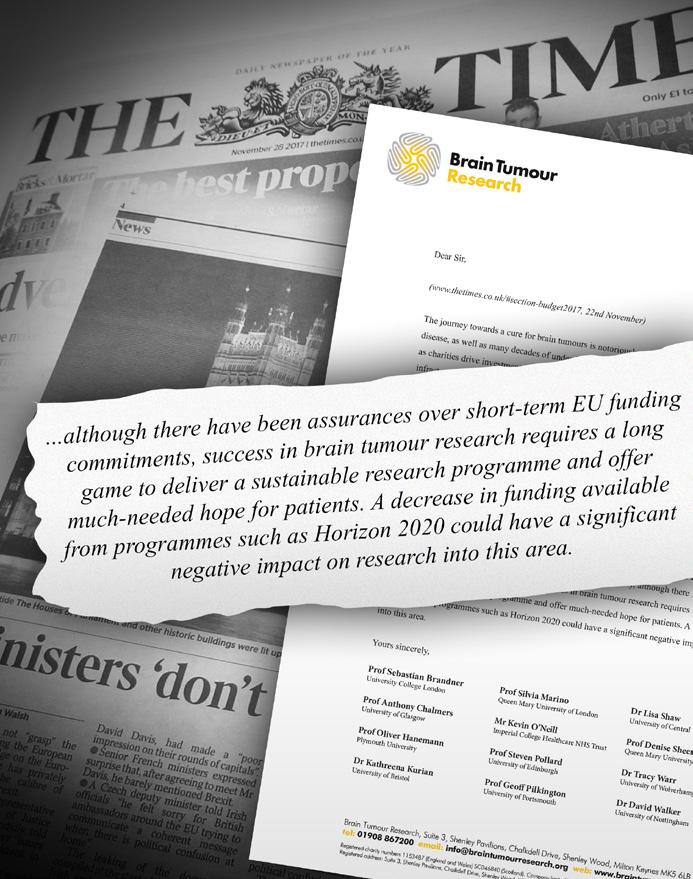
representsthe

legitimateconcernsofcliniciansand researchers,whoareworkingsohardto developnewtreatmentsforthesepatients.”
Professor Silvia Marino from our Centre of Excellence at QMUL commented: “Itwill beessentialthatthe‘image’ofthe UKasanumberonedestinationfor ground-breakingresearchthatisopen andsuccessfulisactivelyfosteredand maintained.”

Assembled MPs, scientists and activists heard from expert speakers from across the research, policy and pharmaceutical sectors. The meeting examined topics such as funds for research, the health workforce, access to EU-wide clinical trials and the supply of brain tumour drugs.
APPGBT chair, Derek Thomas MP, said: “Thisis suchanimportantissueforpeopleupand downthecountry,includinginmyown StIvesconstituency,astherearearound 60,000peoplelivingwithabraintumour intheUK.It’svitalthattheAPPGBT
To read the full minutes of the last APPGBT meeting, visit our website here: www.braintumourresearch.org/ campaigning/appg-on-brain-tumours and the full extent of our scientists’ concerns have been detailed on our blog www.braintumourresearch.org/media/our-blog
BrainTumourResearchis committed to working tirelessly to ensure that UK brain tumour researchers and patients continue to benefit from a relationship with the EU, and that Brexit does not hinder scientific progress or access to drugs and treatments.
If you’re interested in campaigning on our behalf, please register your interest in becoming one of our Community Activists at: www.braintumourresearch.org/campaigning/campaign-with-us
www.braintumourresearch.org Spring 2018 31
BRAIN TUMOUR FATIGUE is different
People with a brain tumour need resources and support to help them on their journey. brainstrust has created a collection of resources in partnership with its community of brain tumour patients, their carers and clinicians. One such resource has been developed to help people cope with fatigue, which they say is one of the most frequent and distressing problems associated with a brain tumour.
They go on to explain that brain tumour fatigue is different. It occurs with emotional, cognitive and behavioural problems and can be due to neurological dysfunction, treatments, mood disturbances and supportive medications.
brainstrust’s my fatigue book aims to help patients and caregivers to understand what is meant by fatigue and to self-manage brain cancer-related fatigue so that they can:
• Understand and evaluate fatigue
• Learn a new pace of living
• Take steps to mitigate the impact of fatigue
• Make the most of what they can do, rather than what they can’t


In this book, brainstrustprovides information about:
• What is meant by fatigue
• Causes of fatigue
• What is different about fatigue for people living with a brain tumour
• Coping with fatigue in different contexts
• Sleep hygiene
• Self-activation measures
• Goal setting
• Fatigue diary
• Looking after someone who has fatigue
• Drug treatments for fatigue
• Who can help
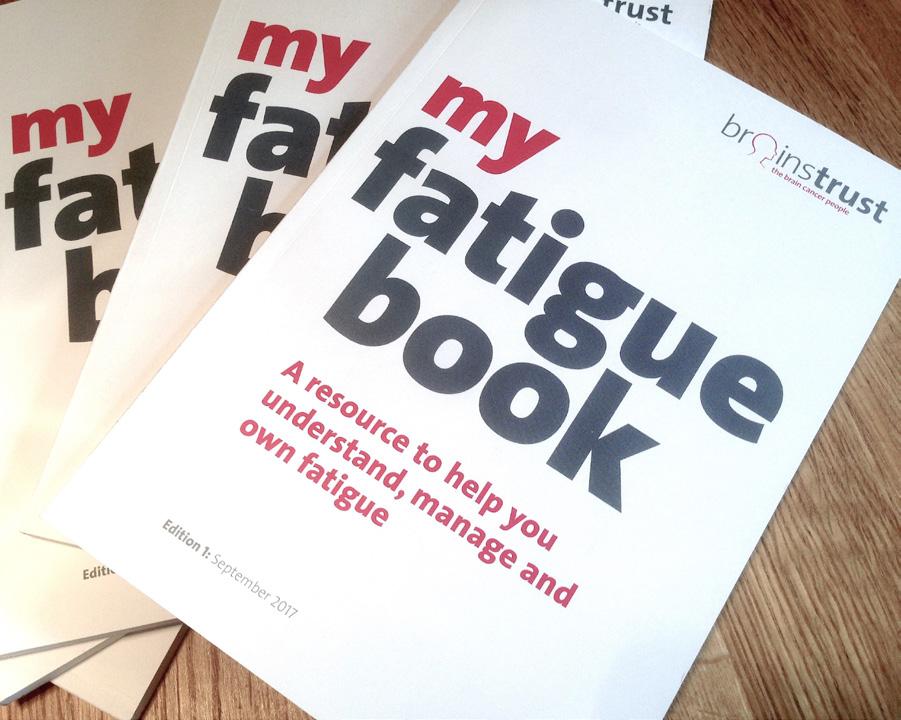
32 Spring 2018 www.braintumourresearch.org MEMBER CHARITY AND FUNDRAISING GROUP UPDATES
To order a free hard copy, please email hello@brainstrust.org.uk For more information about brainstrust’s support resources, go to www.brainstrust.org.uk/advice-resources.php
RED WELLIES BLOWN AWAY BY FUNDRAISING EFFORT
A group of seven friends – Debbie Lilwall, Alison Shingfield, Catherine Bowes, Helen Mendham, Debbie Bennington, Jo Findlay and Rachel Goddard – were blown away by the £25,300 they raised at a Red Wellies charity night at South Green Park Enterprise Centre in Mattishall, Norfolk.
But it nearly wasn’t to be. Early one morning just days before the event, the marquee that had been set up in readiness for the evening was blown away and written off by Storm Aileen as it swept across the county.
Luckily, the local training company that had provided the marquee pulled out all the stops to provide a team of 10 staff to clear the site and ensure a replacement marquee was found and erected in time for the event two days later.
The Red Wellies fundraising group was set up by Mervyn Wiles in memory of his daughter, Lisa, after she passed away in October 2011 following a 14-month fight with glioblastoma multiforme.

The event was also supported by John Buckman, a friend of the organisers and someone who himself has a brain tumour. He generously promised to match the money raised on the night.
and a fantastic £12,650 was raised through raffles, an auction, a silent auction, an indoor beach and a silent disco. Mr Buckman stuck to his word. He doubled the amount, enabling the organising team to present a cheque for £25,300 to Lisa Wiles’ father, Mervyn Wiles.

SONG FOR SUE DINNER DANCE RAISES £14,500
The Song for Sue Foundation has been busy raising money ever since it was set up by the family of Sue Thomas after she died aged 57 in December 2015. Sue was diagnosed with a low-grade brain tumour in July 2013 but it later became a grade four glioblastoma multiforme and, despite chemotherapy and radiotherapy treatment, nothing could save her.

Sue’s husband, David, his two daughters, Holly and Rachael, and son-in-law, Lewis. They held a Dinner Dance at Surrey Downs Golf Club in Kingswood, Surrey, which was attended by around 100 guests. The event included an auction, raffle, a lucky £5 draw and a live band. The evening raised a fantastic £14,500 bringing the Foundation’s total to around £32,000 in 13 months.

www.braintumourresearch.org Spring 2018 33
song for sue IN PARTNERSHIP WITH BRAIN TUMOUR RESEARCH FOUNDATION
plymouth florist makes special tribute
March is Brain Tumour Awareness month in the UK and it’s a time when our Centres of Excellence take the opportunity to pause, reflect and show their respect for those lost to brain tumours by holding a one-minute silence and wreath-laying ceremony in front of their Walls of Hope on 1st March.
Last year, Brain Tumour Awareness month was particularly poignant for former nurse and Plymouth florist, Wendy Jordan. Not only did she design and produce a special floral tribute but she did so in memory of her mum, Susan Flower. Susan passed away 14 years previously, aged 54, and just weeks after being diagnosed with an aggressive brain tumour.
Wendy’s specially-created tribute – a loosely gathered wreath of fresh flowers – was laid during the one-minute silence observed by scientists and researchers at our Research Centre at Plymouth University, marking the start of Brain Tumour Awareness month.

She said: “Itmaybemorethan 10yearssinceIlostmydearmum butIstillthinkofherandmissher everyday.Ifshecouldseeme todayIhopeshewould beproudtothinkshe isbeingremembered inthisway;infact, Ithinkshewouldbe overthemoon.”




A MINUTE’S SILENCE
Please consider participating in a minute’s silence on 1st March, and remembering your loved one with this short poem:
We thought of you with love today, but that is nothing new. We thought about you yesterday, and days before that too. You are forever in our hearts.

34 Spring 2018 www.braintumourresearch.org
BRAIN TUMOUR AWARENESS MONTH
Brain Tumour Awareness month culminates in Wear A Hat Day, the UK’s premier brain tumour research fundraising event.
Please register today at www.wearahatday.org to help make Wear A Hat Day 2018 the best ever.
MARCH 2018

Anthony Marcus Adams
Steven Allen
Alan John Almand
Catherine (Cat) Anderson
David Ashley
Ava Deborah Ellie Ball
Lesley Banks

Julie Basleigh
Edward Bean
Alan Beaumont
Anthony Beling
Dave Bennett
Wayne Blyth
Christina Bower
Diane Boyce
David Bray
Brian Broad
Laurence Brokenshire
Godfrey Butchers
Marcus Butler
Anita Canter
Michael Casey
Sharon Cass
Simon Castlehouse
Andrew Cheetham
Robin Clarke
Thomas Cleary
forever in our hearts
From all of us at Brain Tumour Research, our love and thoughts are with all those who inspire us and with everyone who continues to support us in memory of their loved ones and colleagues, year after year.
Colin Cragg
Samuel Cremer
Patricia Daines
Giuseppina De Nicolais
James Deal
Paul Deamer
Richard Dearden
Eric Dickinson
Alex Drummond
John Duke
Richard Earle
Sonia Ellmore
Karen Farley
Guy Farthing
Reginald Finch
David Finney
Geoffrey William Fordom
Diane French
Alex Fryer
Maurice George
Kenneth George Gill
Martin Gough
Maxine Gowland
Magnus Grahn
Michael Haig
Hilda Harding
Mike Hardwick
Marie Heginbottom
Stephen Himpfen
John Hobbs
Jessica Hoffman
Thomas Richard Hollick
Carol Hooper
William Robert Hotson
Maureen Hunt
Doris Inniss
Ian Joce
Derek Johnson
Gary Johnson
Charles Joseph Jones
Isobel Jordan
Ian Kilsby
Maureen King
David Leatherbarrow
Michael Lewis
Richard John Lipscombe
Sarah Little
Glenn Marrett
Stephanie Marrett
Norma Martin
Brian John Matthews
Katie McCleery
Elizabeth McCormack
William McKitterick
Sharon Meli
Dave Moore
Brian Morgan
Lyndsay Morris
Ronald Mossman
Sonya Neale
John Palmer
Grandson, Owen
Marjorie Parker
Rita Pearcey
Carole Anne Phillips
Colin Pickard
Dave Pierce
Peter Pile
Betty Preston
Louise Price
Rex Pullin
Michael Quigley
Keith Reed
Gareth Regan
Rowena Robbins
Annette Lindsey Roper
Penny Rowland
Jayne Rowley
Gillian Schuster
Fred Scott
Michael Shane
Candida Silver
Margaret Skidmore
Brendan Smith
Kimbert St Ange
Carol (Cas) Ann Stewart
Joan Strachan
Michael Sugden
Jacqueline Sutcliffe
David Sweeney
Isabelle Todd
Adrian J Turner
Neil Vernoum
Vincent and Susan
Rebecca Marie Vines
Larry Walsh
Susan Watts

Debi Webb
Luke Wheeler-Mezei
George Whitby
Andy Whitelock
David Wilde
Jane Williams
Maggie Wilson
Lee Wise
Maurice Youngs
www.braintumourresearch.org Spring 2018 35 Loved ones here include those lost to a brain tumour for whom we received funeral donations between 1st July 2017 and 31st October 2017





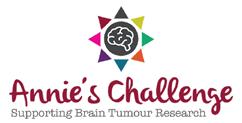
























Together we will find a cure Our Fundraising Groups Our Member Charities www.braintumourresearch.org | Tel: 01908 867200 info@braintumourresearch.org Brain Tumour Research, Suite 3, Shenley Pavilions, Chalkdell Drive, Shenley Wood, Milton Keynes, Bucks MK5 6LB Registered charity number 1153487 (England and Wales) SC046840 (Scotland). Company limited by guarantee number 08570737. We love hearing from you! Whether you’d like to volunteer, set up a regular donation, discuss fundraising ideas, are interested in becoming a Fundraising Group or simply want some information... we are only a call, email, tweet or Facebook message away. DIVISION OF NEUROPATHOLOGY AND DEPARTMENT OF NEURODEGENERATIVE DISEASE Our Centre of Excellence Partners #FundingTheFight MARK “BOMBER” LANCASTER TRUST The Lorn’s Legacy song for sue FOUNDATION THE Leah’s Fairy Fund












































































































































































































